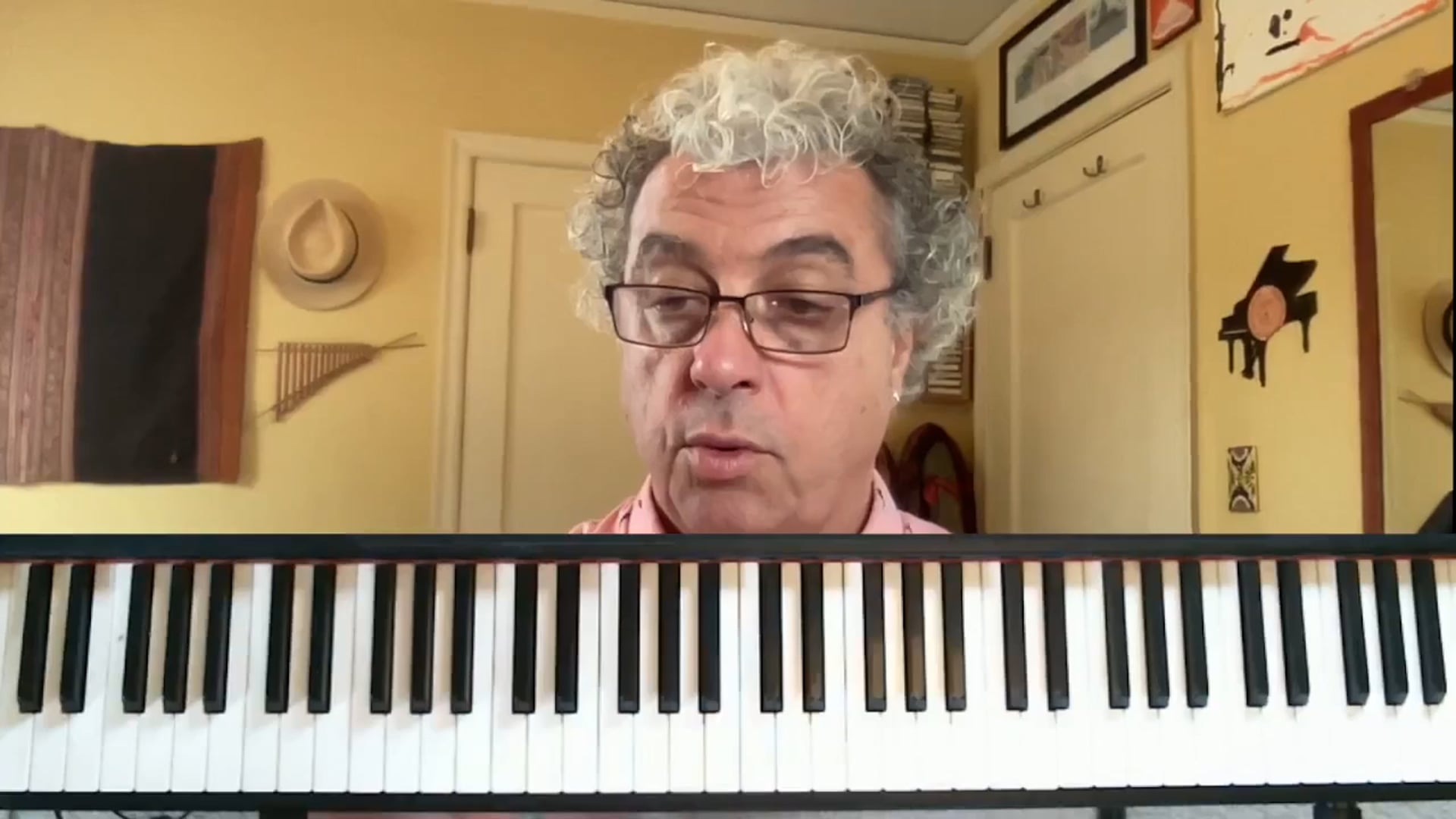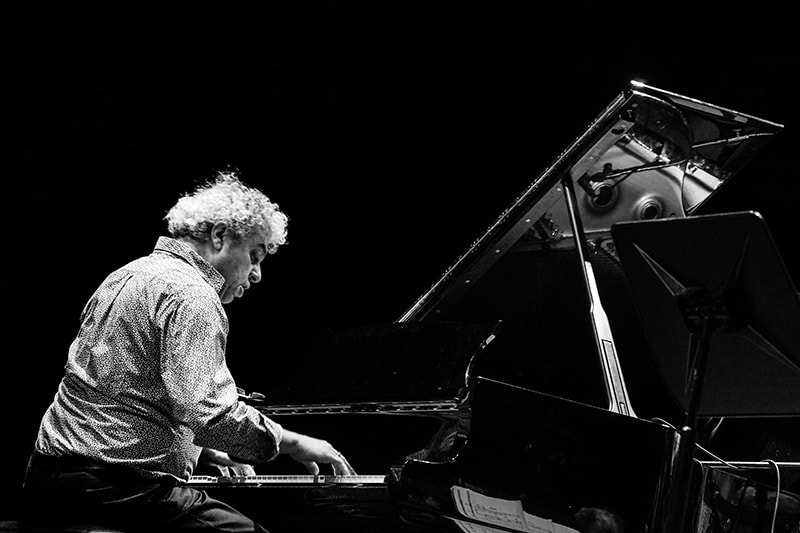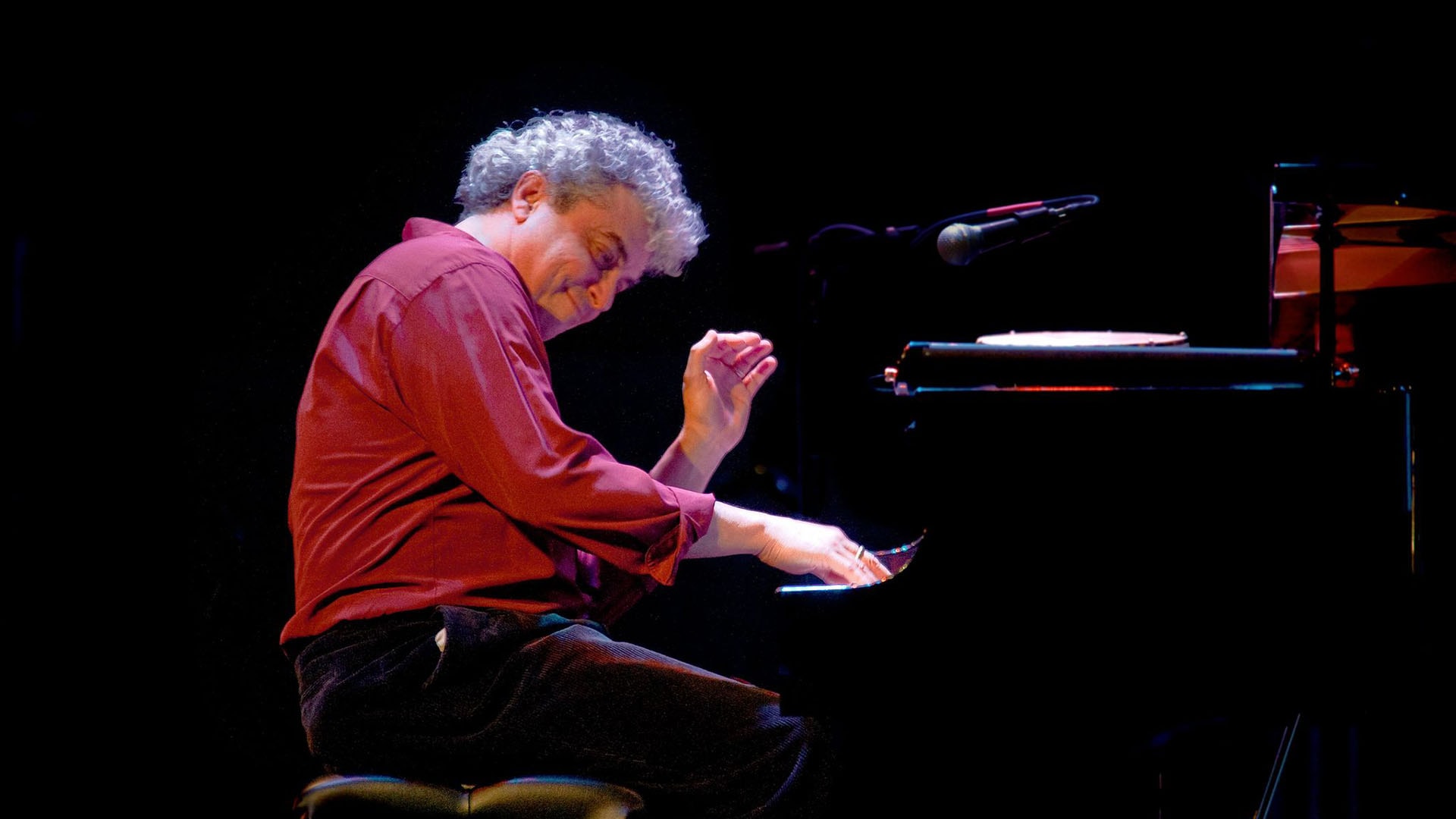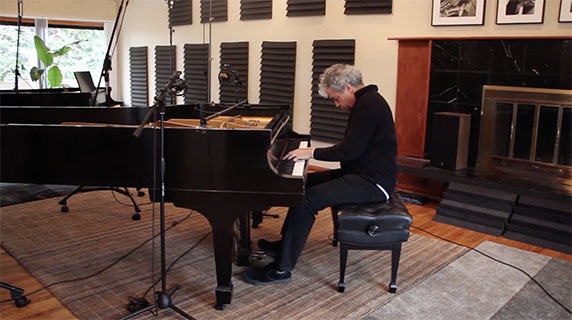

Jovino Santos Neto
Three-time Latin Grammy nominee Jovino Santos Neto, a master pianist, composer and arranger, is among the top Brazilian musicians working today.
Live Seminar Resources
Live Seminar Resources
PDF Downloads
- Insensatez (E.Elias) - Chord Chart
Join PianoGroove Pro to access all downloads and learning resources.
Download theory supplements, midi files, chord changes and full note-for-note transcriptions of every lesson.
- Wave (J. Gilberto version) - Chord Chart
Join PianoGroove Pro to access all downloads and learning resources.
Download theory supplements, midi files, chord changes and full note-for-note transcriptions of every lesson.
Related Lessons
Seminar Description
Seminar Description
Accompanying Vocals in the Bossa Nova Style
Welcome to this special seminar on accompanying vocals in the Bossa Nova style. In this lesson, we focus on the art of supporting a vocalist with harmonic and rhythmic sensitivity. Using the classic Antônio Carlos Jobim composition “How Insensitive”, we explore the nuances of piano accompaniment in a Bossa Nova setting.
By the end of this lesson, you’ll have a deeper understanding of harmonic flexibility, rhythmic placement, and how to create lush chord voicings that enhance the vocalist’s delivery while maintaining a light and flowing accompaniment.
Understanding Bossa Nova Accompaniment
Accompanying a vocalist in Bossa Nova requires a delicate balance between rhythm and harmony. Unlike jazz comping, which often employs syncopation and comping patterns, Bossa Nova accompaniment typically features a steady, flowing feel that supports the voice without overwhelming it.
One of the first considerations when accompanying a singer is whether you are the sole harmonic instrument. If a guitarist is also playing, the pianist should play more sparsely, focusing on supporting the harmony rather than doubling what the guitar is already covering.
We begin our exploration with a stripped-down version of “How Insensitive”, where we accompany a vocal track extracted from a recording by Brazilian pianist and vocalist Eliane Elias, with bass and drums providing the rhythmic foundation.
Chord Voicings & Harmonic Flexibility
In Bossa Nova, harmonic flexibility is essential. Rather than strictly playing 1-3-5-7 chord voicings, we incorporate extensions such as 6ths (13ths), 9ths, and altered tensions to create richer harmonies.
For example, when playing E-7, instead of sticking to a basic voicing like E-G-B-D, we explore E-G-B-C# (E minor-major 7) or E-G-B-D-F# (E-9). These subtle changes add movement and keep the harmony interesting.
Another key technique is voice leading, which involves smooth transitions between chords by keeping common tones and moving as few fingers as possible. In the progression E-7 to A7 to Dmaj7, we focus on the movement of guide tones (3rds and 7ths) to create a seamless flow between the chords.
Rhythmic Approach in Bossa Nova
Bossa Nova rhythm is subtle yet complex. The pianist does not need to forcefully mark time, as the groove is already established by the bass and drums. Instead, we use a syncopated, floating approach to chord placement.
Rather than playing on the beat, we emphasize offbeats and anticipate changes, creating a breathy, organic feel. This allows the vocalist to phrase freely while maintaining a steady rhythmic pulse.
A fundamental rhythmic pattern in Bossa Nova piano accompaniment is:
- Root or shell voicing (1-7 or 1-3-7) played on beat 1
- A syncopated chordal fill on the “and” of beat 2 or beat 3
- Light movement between voicings, avoiding heavy-handed comping
Common Bossa Nova Voicings & Substitutions
Bossa Nova harmony frequently uses diminished passing chords, sus chords, and chromatic movement to enhance harmonic interest. Some common substitutions used in this lesson include:
- Diminished Chords as Passing Tones – In place of standard dominant chords, we can use diminished chords built on the leading tone. Example: D#°7 (D#-F#-A-C) replacing B7 in a ii-V-I progression.
- Major 6 Chords Instead of Major 7ths – Instead of playing Dmaj7 (D-F#-A-C#), we use D6 (D-F#-A-B) for a warmer sound.
- Altered Dominants for Tension – In the turnaround, we explore B7(b9) or B7(#5b9) for extra color leading into E-7.
These techniques allow us to create lush, expressive voicings without cluttering the harmony.
Practice Tips
-
Focus on Light, Floating Accompaniment – Avoid heavy-handed playing; let the rhythm breathe and support the vocal phrasing.
-
Use Harmonic Flexibility – Experiment with extensions (9ths, 13ths) and voice leading to create smooth chord transitions.
-
Anticipate Rhythmic Placement – Rather than playing strictly on the beat, introduce syncopation and anticipations to create a natural, flowing accompaniment.
-
Understand the Singer’s Range – Adapt your voicings based on whether the vocalist is in a higher or lower register to avoid clashing with the melody.
- Transcribe & Analyze Recordings – Listen to Bossa Nova recordings by artists like João Gilberto, Antônio Carlos Jobim, and Eliane Elias to absorb authentic rhythmic and harmonic nuances.
Final Thoughts
Mastering the art of Bossa Nova accompaniment is about balance—balancing rhythm, harmony, and space to support the singer while keeping the music rich and engaging. By focusing on harmonic flexibility, syncopated rhythmic placement, and light, floating voicings, you can develop a sophisticated and authentic approach to playing Bossa Nova piano.
Now, apply these techniques to your own playing and experiment with different voicings and rhythmic feels. Enjoy the journey, and happy practicing!







Hey Jovino, I really enjoyed this seminar and I’m sorry I missed the live version. I have been working on playing How Insensitive for a few years. I’m now singing it in Gb minor and accompanying myself, so don’t have a drum as in your beautiful playing with the Elain Elias version. I am using the rhythm of the guitar Gilberto/Getz used which is quarter note, quarter note tied to eighth, dotted quarter note. When I get to my improv, my left hand is playing bass note, 5th, 3/7 shell voicing. It is not as floating and as beautiful as your seminar. Any thoughts or suggestions for me to create a more lyrical interpretation. Thanks, and understand this is hard to explain in writing. Margy
Hi Margy,
Thanks for your question and my apologies for the delay in answering. I am traveling a lot these days.
Anyway, if you don’t regularly play with a drummer, you could use a groove generator like eBatuque, apps.apple.com/us/app/ebatuque/id1554007194
This app provides a wide variety of groove patterns which you can control ( tempo, instruments, texture). You can use this to develop an internal sense of groove, so you can play more lyrically and have your chords float over the groove without losing the pulse.
Regarding your voicings, remember that in this style you try to avoid redundancies. If your vocal melody is already on a note, you don’t ned to add that note to your chord. This creates a more transparent sound. Also, avoid playing all the notes at once, as a block chord, and focus on soft arpeggios of syncopated notes instead.
Check out the harmonic flexibility I mentioned in my seminar and see what you can create.
Let me know if this is helpful, and I hope you enjoy our PianoGroove videos!
Cheers,
Jovino